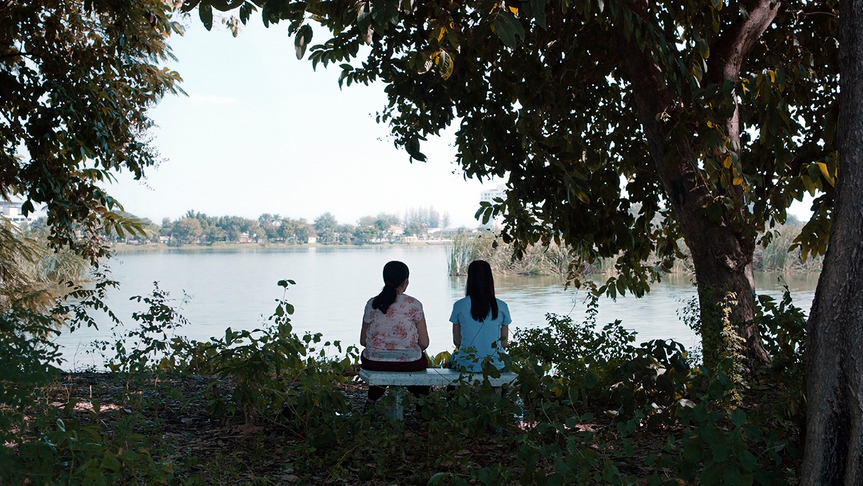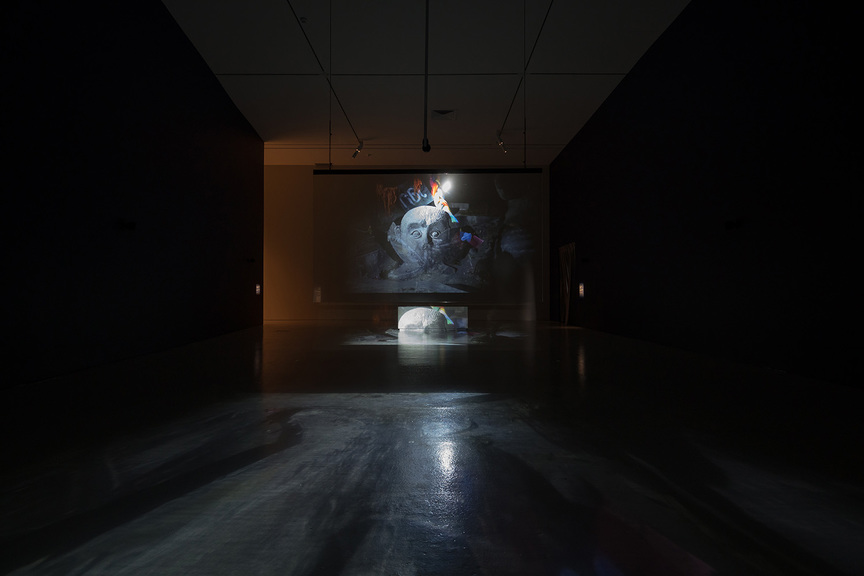
R
E
V N
E
X
T
Apichatpong Weerasethakul: A Performance of Dissent through Cinema
APICHATPONG WEERASETHAKUL on the set of Cemetery of Splendor, 2015, feature film, color, sound: 2 hrs 2 mins. Photograph Chai Siris. Courtesy Kick the Machine Films.
*In 2018, ArtAsiaPacific hosted a Young Writers Contest to celebrate its 25th anniversary year. This essay by Najrin Islam won third place. Read Kaitlin Chan’s entry (second place) here and Joyce Wong’s winning entry in Issue 111 of AAP.
“Isn’t it only natural that, once in a while, we may destroy ourselves to be able to mutate and be reborn?” HG Masters ended his Feature article in ArtAsiaPacific Issue 70 (Sep/Oct 2010) on Apichatpong Weerasethakul with this quote by the Thai filmmaker and media artist. In the years since then, Thailand has faced prolonged violent political unrest, starting from 2013. A string of military coups on May 22, 2014, subsequently gave way to more violence and insidious forms of repression. Caught in this flux, the concept of cinema has found ever-expanding interpretations through the director’s works as he attempts to come to terms with the altering geopolitical dimensions of Thailand.
Since 2010, Apichatpong’s work has taken a more emphatic turn towards Thailand’s socio-political context. Aggrieved at the arbitrary power exercised by the military junta to mutilate creative works by censoring them prior to public screenings, the director declared that Cemetery of Splendor (2015) was his last feature film to be shot in Thailand. He announced in May 2018 that his next project, Memoria, will be produced in Colombia (tentatively in 2019) and will feature Scottish actress Tilda Swinton. A radical political statement, the film might reveal the “mutations” in Apichatpong’s modes and processes that come with this shift in geographical base, as his filmography to date has been shaped by a sensibility largely cultivated on his home ground.
The remote villages and forests of his native Isan region in northeast Thailand have remained the kernel of Apichatpong’s films, as has his thematic focus on memory, nostalgia and the transmigration of spirits. These concerns have converged around the idea of “sleep,” which has acquired a newfound importance in his cinema as an altered form of consciousness. Cemetery of Splendor shows a group of soldiers lying perpetually comatose in a clinic constructed on an ancient burial ground, where kings in the graves below harness the soldiers’ spirits to wage internal wars. This psycho-geographic exploration of the soldiers’ state may be a reference to the parasitic relationship between the Thai military government and the civilian population, in how the ruling junta harvests the latter’s energy through intangible modes of coercion.
In one of the film’s more poignant sequences, two characters go to a multiplex to watch a commercial film. The audience rises for the Thai national anthem before the main show, as is mandated by law, but they are only seen gazing at a blank screen in silence. The scene is an undisguised comment on the debilitating censorship laws that inhibit free expression, especially the lèse-majesté law that proscribes even a minor critique of the Thai monarchy. The specter of the violent political history of Thailand looms large over the film in the light of its iteration in the contemporary moment. Apichatpong has not agreed to screen the film in Thailand to date, in vehement resistance to any form of censorship.
In his Feature, Masters also talks about the various interlinks within the works that constitute Apichatpong’s oeuvre. Produced as a companion piece to Cemetery of Splendor, the video installation Fireworks (Archives) is set in the unorthodox Sala Keoku temple in the politically marginalized northeast. A contrast to the slow melancholy of its feature-length counterpart, Fireworks depicts concrete sculptures of beasts lit up in a spectral play of light and shadows, which were created by the temple’s founder in an idiosyncratic response to folktales and political myths. They stand in disquieting contrast to the crepitation of fireworks that, aurally, evoke gunshots. Apichatpong appropriates a device of the victor—gunpowder—and in haunting vignettes, creates an oneiric collage that recalls on site the brutal history of communist uprisings.
Apichatpong’s predicament is symptomatic of a pervasive institutional attempt at erasure. In response to this clampdown on creativity, his works subtly unveil the illusions begotten by a censorious regime where everything arrives filtered to suit propagandistic needs. Looking at political duress as a productive agent of dreaming, Apichatpong’s work actively creates a new geography of dissent.
To read more of ArtAsiaPacific’s articles, visit our Digital Library.















